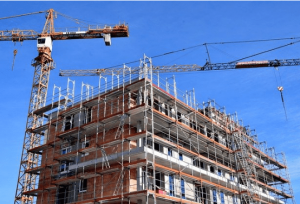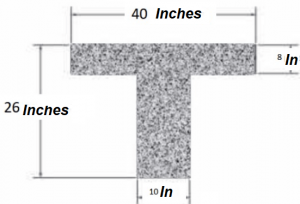Dead loads: characteristics, calculation, examples
We explain the dead loads with characteristics, calculation and examples. The dead loads in a structure represent the weight of all the elements that participate in its construction, and those that are added later and remain fixed to it. what are dead loads
They are the permanent items, including loads from walls, roof, glass, windows, columns, plumbing, tanks, electrical system, air conditioners, and more.

Note that passing people, furniture or vehicles are not included, since these are loads that are kept in motion and are analyzed separately. The latter are known as live charges . However, both types of loads, both permanent and transient, are considered structural loads . what are dead loads
Civil engineers pay close attention to all the loads that structures must withstand, since they must be built to be stable and maintain over time. Therefore, in the design, one must start by ensuring that the structure supports its own weight.
Then it must withstand the weight that is estimated to be that of the final use of the structure. Additionally, since the construction must be safe for users at all times, it is sought to resist the elements that will appear over time, that is, accidental loads , such as those caused by earthquakes, wind, snow and water.
Dead loads are part of gravitational loads, which are related to weight. Any structure is subject to these loads, as it is always in the middle of the Earth’s gravitational field.
Characteristics of dead loads
-The main dead load of a structure is its own weight.
-They are vertical forces, since they derive from the weight, which is directed vertically downwards.
-They are permanent loads, because they act during the entire time that the construction remains standing.
-It is considered that the magnitude of the dead loads is constant.
-Its value can be determined quite accurately knowing the dimensions of the structure and the properties of the materials such as their specific weight or density . These values are tabulated for each material.
How to determine the value of dead loads?
Knowing the dimensions and the specific weight of the material with which the structure is made, it is very easy to evaluate the value of the dead load. However, the exact dimensions are not precisely known at the beginning of the project.
This is the reason why the designer must make a preliminary estimate, based on his experience. After this, revisions and adjustments can be made if necessary. what are dead loads
It should also be noted that there are regulations established in each country, with the requirements regarding the materials and dimensions of the structures.
As a guide so that the reader has an idea of the dead loads in various types of buildings, the following quantities are available, depending on the predominant material:
-Wood: 1.9 – 2.4 kN / m 2 (40-50 lb / ft 2 )
-Steel: 2.9 – 3.6 kN / m 2 (60-75 lb / ft 2 )
-Reinforced concrete: 5.3 – 6.2 kN / m 2 (110-130 lb / ft 2 )
Steel, wood and concrete are the most used materials in modern constructions. what are dead loads
Note that the units for load are force per unit area. In the SI International System the force is given in newton (N), while in the British system it is given in pound (lb) or pound-force. 1kN equals 1000 N.
To find the total dead load, in principle the individual weights of each element are added.
By using a table of densities or specific weights (see examples below) it is possible to calculate the dead load of a given structure, according to its dimensions.
If the structure is a beam, for example, the dead load is calculated by multiplying the specific weight of the material by the cross-sectional area. what are dead loads
In the case of a solid slab, its thickness is multiplied by the specific weight of the reinforced concrete.
Examples of dead loads
Here are the main dead loads of a construction:
-Pavements
-Slabs
-Walls
-Frisos
-Fills
-Walls
-Balls
-Air conditioners and heaters.
-Plumbing and sanitary and gas installations.
-Static thrust of water and land.
Specific weights of some construction materials
And here are the specific gravities of some common materials in construction. With them we can calculate the dead load of each structure: what are dead loads
-Steel: 77.3 kN / m 3 (492 lb / ft 3 )
-Reinforced concrete: 17.4 kN / m 3 (111 lb / ft 3 )
-Concrete (reinforced stone): 23.6 kN / m 3 (150 lb / ft 3 )
-Plywood: 5.7 kN / m 3 (36 lb / ft 3 )
-Normal weight masonry: 21.2 kN / m 3 (13.5 lb / ft 3 )
-Dry clay: 9.9 kN / m 3 (63 lb / ft 3 )
Calculation example: dead load of a beam
The T-beam, the dimensions of which are shown in the following figure, is part of a building and is made of stone-reinforced concrete.

To calculate the dead load, the value of the specific weight for this class of concrete is used, and multiplied by the cross-sectional area, as indicated above.
In the case of the beam, the load is given in force per unit length. Note that it is necessary to previously convert from inches to feet. The necessary conversion factor is: what are dead loads
1 foot = 12 inches
The beam consists of two parts, one horizontal and one vertical, whose contributions are added to find the total load, which we will denote as w.
These contributions are calculated by multiplying the specific gravity by the cross-sectional area, as shown below:
w = 150 lb / ft 3 (40 x 8 in 2 + 18 x 10 in 2 ) (1 ft / 12 in) 2 = 520.83 lb / ft
Note that the transformation of units (1 foot / 12 inches) 2 appears at the same time with the load calculation.
Importance of dead loads in safety
Engineers and builders carry out protocols to ensure the safety of buildings. However accidents occur when loads are not properly distributed.
Versailles Hall in Jerusalem
In 2001, a festival hall in Jerusalem, Israel, collapsed because the building had undergone major structural modifications. Originally one part had been designed to have only two stories, and a third was added later. what are dead loads
Shortly before the accident, walls had been removed on one of the lower floors, causing cracks that heralded the collapse of the building, which eventually occurred when a wedding was taking place. As a result 23 people died and there were many seriously injured.
Sampoong stores in Seoul, South Korea
Another case of collapse of a structure due to changes in dead load had occurred some years before the collapse in Jerusalem.
It was a shopping mall in Seoul, South Korea, in which about 500 people died and more than a thousand were injured, when the building collapsed in 1995, one of the biggest disasters in peacetime Korea. what are dead loads
The building underwent important modifications, since it was originally designed for residential use: several support columns were narrowed to make room for an escalator.
After a while, the owners decided to add one more floor, intended for restaurants, for which the heating installation was severely modified, through hot water pipes that ran under the restaurant floor, as well as that of the huge airs conditioners installed on the ceiling. what are dead loads
These facilities are part of the dead load of a building, but the original design did not contemplate this 300% increase in load, so the building, already weakened, ended up collapsing.
This indicates the importance of properly considering loads in the design of a building and the consequences of making severe structural modifications. what are dead loads
